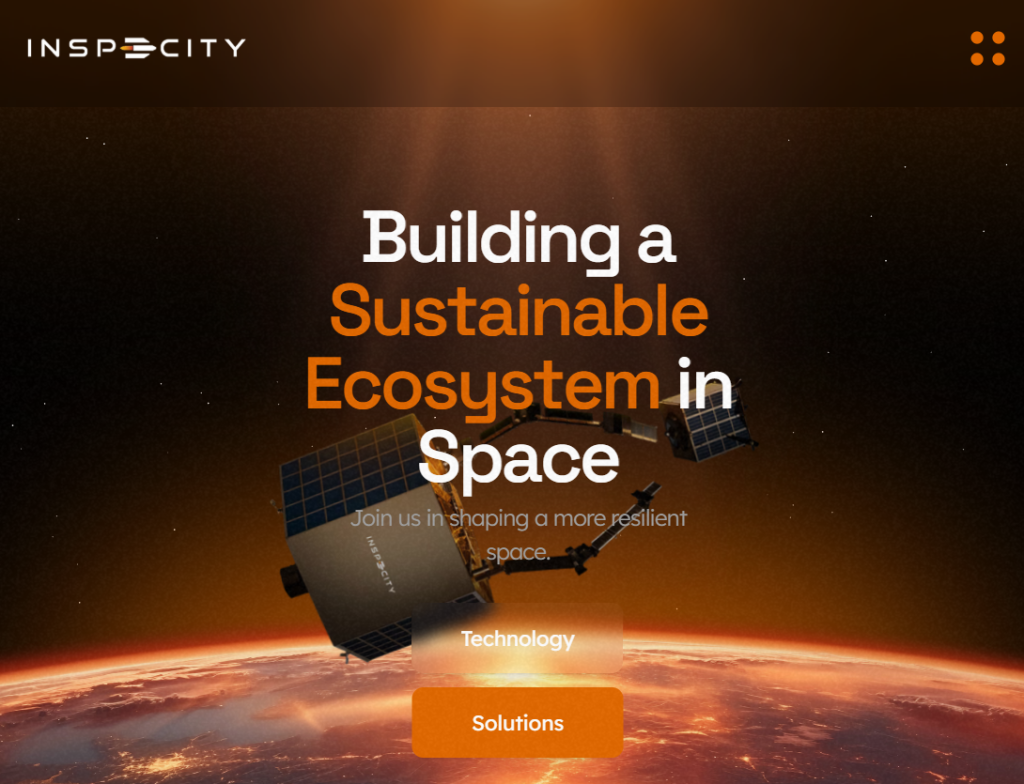InspeCity Raises $5.6 Million Seed Round to Revolutionize Industrial Inspection with Robotics and AI
July 24, 2025
byFenoms Start-Ups

InspeCity, a pioneering startup in the robotics and industrial inspection sector, recently announced the successful closure of a $5.6 million seed funding round. Spearheaded by visionary founder Dr. Tausif Shaikh, the round saw participation from prominent investors including Ashish Kacholia, Speciale Invest, Shastra VC, Antler India, DeVC, MGF-Kavachh, and Anicut Capital. This infusion of capital aims to accelerate InspeCity’s mission to revolutionize industrial inspections - leveraging robotics, AI, and automation to increase safety, reduce costs, and deliver precision insights.
Industrial inspection remains a critical yet traditionally labor-intensive process across infrastructure, energy, manufacturing, and logistics sectors. The global industrial inspection and non-destructive testing (NDT) market was valued at approximately $15 billion in 2023, with expected growth rates exceeding 7% annually over the next decade. This growth is fueled by aging infrastructure, rising safety regulations, and the urgent need for predictive maintenance to minimize downtime and failures.
The Challenge and Opportunity in Industrial Inspection
Industrial inspections are fundamental for ensuring the integrity of structures such as pipelines, power plants, oil rigs, and manufacturing equipment. Historically, these inspections have been manual, costly, and risky for personnel.
InspeCity addresses these challenges by developing advanced robotic solutions combined with AI-powered analytics that can autonomously perform detailed inspections and deliver actionable insights. Their technology can scan, detect anomalies, and monitor conditions with greater accuracy and consistency than traditional methods.
The transformative potential is enormous. According to Allied Market Research, predictive maintenance enabled by AI and robotics in industrial settings is expected to generate a $23.5 billion opportunity by 2030. This promises not only cost savings but also operational resilience and enhanced safety.
What Sets InspeCity Apart: A Closer Look at Their Approach
While many focus on robotic hardware or isolated software, InspeCity’s holistic platform integrates cutting-edge robotics with AI-driven decision engines tailored to complex industrial environments. Their solution handles both remote monitoring and on-site inspections, equipped with precision sensors and machine learning models trained on vast datasets of industrial defects.
A core part of their edge lies in this integration, enabling faster deployment, better scalability, and more actionable insights for operators. Their AI models can classify issues by severity and predict failure points before escalation, giving companies critical lead time to plan maintenance.
Important Insight for Founders: Prioritize Integration Over Innovation for Market Fit
Amid excitement about new tech, many founders building robotics and AI startups focus heavily on “novel” hardware or proprietary algorithms without sufficiently validating their solution within operational realities.
InspeCity’s journey reveals a crucial lesson: the path to product-market fit in industrial tech is less about inventing entirely new technology, and more about integrating and tailoring existing advanced components into a seamless, reliable system that solves real-world pain points.
Industrial clients prioritize reliability, ease of integration, and ROI over bleeding-edge novelty. This means founders must deeply understand customers’ workflows, compliance requirements, and technology stacks - and design solutions that fit smoothly. It also requires strong emphasis on interoperability with existing infrastructure, extensive field testing, and flexible deployment.
InspeCity’s strategy reflects this insight - prioritizing partnerships, modular design, and rapid iterations based on user feedback. They avoided the common pitfall of developing impressive demos that don’t scale in industrial use cases. This approach builds trust with early adopters and accelerates adoption in highly regulated industries.
For founders, this underscores the importance of embedding deeply in the target market ecosystem early and often. Build with operational pragmatism, not just technical elegance. The technology that wins in industrial applications is rarely the most futuristic; it’s the one that works reliably, integrates smoothly, and demonstrably lowers risk and cost for clients.
Market Trends Fueling Growth in Industrial Robotics and AI
The industrial robotics market is forecast to reach $73 billion by 2030, growing at a CAGR of about 10%. Key drivers include the push towards Industry 4.0 automation, rising labor costs, and increased focus on safety and sustainability.
In parallel, AI adoption in industrial maintenance is rising quickly. A recent survey indicates 60% of large manufacturers are investing in AI-powered predictive maintenance solutions. Robotics combined with AI improves inspection speed and accuracy, helping companies avoid costly downtime and comply with strict regulations.
Governments worldwide are also introducing tougher inspection and reporting requirements for critical infrastructure, further accelerating demand for innovative inspection technologies.
InspeCity is well-positioned to capitalize on these trends, leveraging both technology advancements and regulatory tailwinds. Their recent funding will enable them to scale operations, expand R&D, and capture a growing market share.
The Future Outlook: From Inspections to Autonomous Asset Management
InspeCity’s vision extends beyond periodic inspections to continuous, autonomous monitoring systems that track asset health in real-time and integrate with enterprise asset management platforms to automate maintenance workflows.
This represents a paradigm shift - from reactive maintenance triggered by failure to proactive, data-driven asset lifecycle management. As AI and robotics mature, companies will move towards zero-downtime operations enabled by continuous monitoring, predictive insights, and automated intervention.
This evolution is critical. Studies show unplanned downtime costs industrial companies an estimated $50 billion annually in lost productivity. Solutions that reduce downtime even marginally will see rapid adoption.









